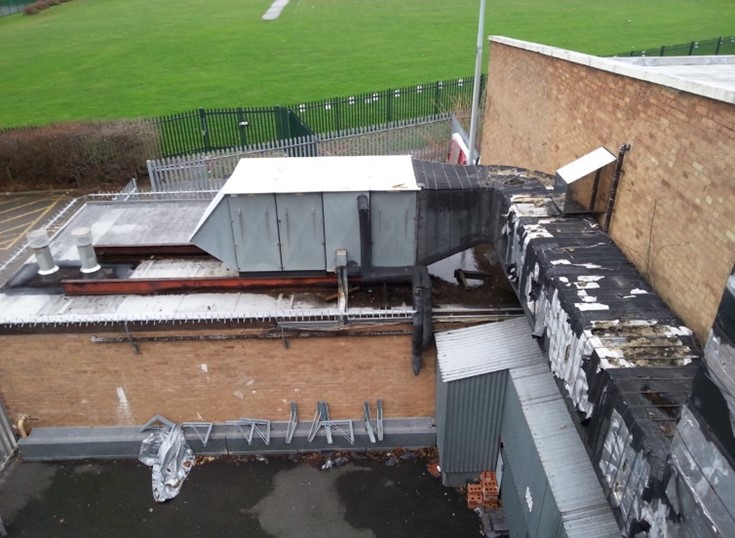Changes explained…

Paul Downing, Principal Consultant at Compliance (Air and Water) and member of the of the inaugural 1998 HVCA (Now BESA) Ventilation Hygiene Branch, outlines the amendments to section 11 in the April 2024 first edition of TR19 AIR, rebranded and titled ‘Specification for Internal Cleanliness and Hygiene Management of Ventilation Systems’.
TR19 AIR Section 11: Waterborne Contaminates in Air Handling Systems
Standards and guidanceassociated with the ingress of waterborne contaminants within air handling systems.
For most commercial heating, ventilation & air conditioning (HVAC) systems that do not use a direct water supply, it is possible for Legionella to grow in the moisture that builds up in the systems. Most industrial HVAC systems operate at temperatures that are ideal for Legionella to grow. Therefore, HVAC systems should be designed in a way that allows for ease of monitoring and cleaning. They should also be constructed in a way that will effectively minimise moisture build up and the potential for microbiological colonisation and Legionella growth.
Organic contamination within air handling units (AHUs) and ventilation systems poses a serious risk. The primary cause of air conditioning and waterborne contamination is poor cleanliness, maintenance and design.
To minimise the risk of waterborne contamination in air handling and ventilation systems it is important to ensure that air handling and ventilation fresh air intakes are located in a safe position that limits the potential exposure of Legionella organisms, for example away from cooling towers, condensers and areas of still or stagnant water. Adequate access should be installed to system components at risk and maintenance procedures should also be implemented to limit the growth, transmission and exposure of Legionella bacteria.
System components where moisture is present with risk of microbiological growth include (but are not limited to the following items):
- Fresh air intakes
- Filtration
- Cooling coils including associated condensate drain trays & pipework
- Humidification
- Terminal items (Fan coil units)
- Ventilation ductwork (External)
Approved Code of Practice (ACOP) L8 The Control of Legionella in Water Systems
Stems from the Health and Safety at Work Regulations 1974 and the Control of Substances
Hazardous to Health Regulations 2002 (COSHH).

Separation of the ACOP from the Guidance HSG 274 parts 1, 2 and 3
In response to public consultation in 2013/2014, the HSE decided to separate the ACOP from its guidance and publish three supporting documents.
Part 3 offers variation on guidance for ‘other systems’ that could pose a risk. From a Legionella management perspective, buildings with air handling and ventilation installations should be classified in accordance with HSG 274 Guidance Part 3 that offers variation on guidance for ‘other systems’ that could pose a risk.
Standards and guidance associated with the ingress of waterborne contaminants within air handling systems includes, but is not restricted to, the following:
- BS15780:2011 – Ventilation for Buildings Ductwork Cleanliness of ventilation systems –
States specific guidance for AHU components in reducing microbial colonisation to a defined level. Furthermore BS15780 provides specific guidance for the cleanliness of AHUs or/and ducting that is critical to good hygiene and cites the recommendations of EN13053:2006 that prescribe the requirement for inspection and cleaning specific to humidifiers including water treatment.
- HTM 03-01: Note 4 – Specialised ventilation in healthcare premises – Section 5 Inspection and maintenance, Ventilation system cleaning.
- 5.22… the ductwork should not be ‘fogged’ with chemicals.
This treatment has no lasting biocidal effect and is responsible for initiating the breakdown of the galvanised coating of ductwork.
- HSE HS(G) 132 Guidance Note
- How to deal with Sick Building Syndrome – Cleaning can be a major factor in preventing Sick Building Syndrome (SBS). The recommended frequencies of cleaning for ventilation systems including:
- Wet areas of plant including cooling coils and humidifiers – Annually
- CIBSE TM26 – Hygienic maintenance of office ventilation ductwork – Provides professional guidance for building managers. It sets out procedures for addressing the microbiological cleanliness of ductwork systems when included within the manager’s normal good practice provisions, such as those set out in the BESA Guide to Good Practice. (TR/19)
- TR19 (Air) – Table 6: Refers to the recommended minimum regular inspection/monitoring intervals (in months) according to system (cleanliness) quality class. Notes to Table 6: Wet areas of the ventilation systems comprise humidification, cooling coils, condensate trays and other ancillary or associated items of plant containing these elements.
- How to deal with Sick Building Syndrome – Cleaning can be a major factor in preventing Sick Building Syndrome (SBS). The recommended frequencies of cleaning for ventilation systems including:







